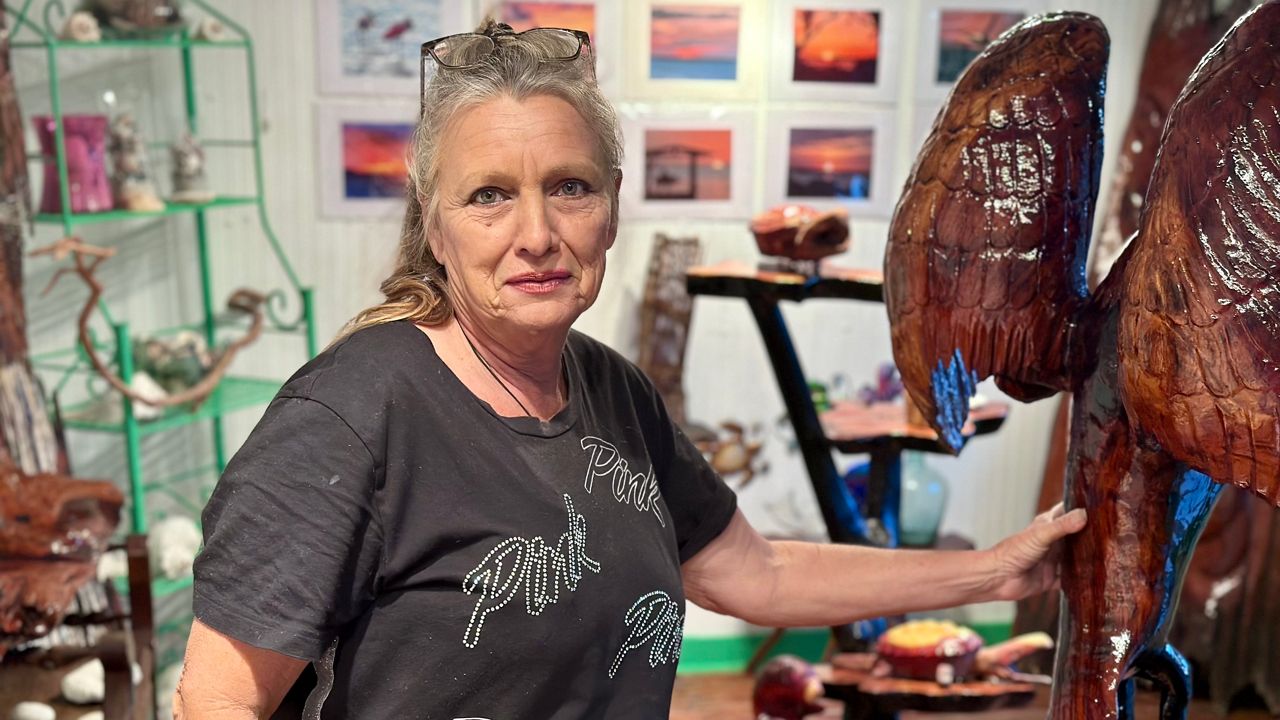A male great horned owl named Oliver who had been nesting in a Philippe Park tree for the past seven years was found dead on Friday in Safety Harbor and authorities believe it was poisoned by rodenticide.
"It took out last year's generation too — all three chics were presumed dead from rat poison," said Fairl Thomas, 23, with Birds in Helping Hands. "Two of them tested positive for rodenticide and one was never seen again."
What You Need To Know
- Total of three dead owlets have tested positive for rodenticide in the past year
- An owl usually eats at least 12 rats every day
- Pinellas County will have necropsies done on the owl parents
Oliver's family fared even worse this year. In March, a chick named Huey was found dead and a necropsy showed the cause was rodenticide, according to Thomas. A few days later, Oliver's mate, Emily, was found dead.
Earlier this week, a second chick was found dead inside the nest. Pinellas County used a bucket truck to retrieve the owlet's body. The third owlet has been missing since Friday and volunteers are looking for it.
"They were such good parents — Oliver, the father, was actually seen sitting with one of his deceased babies yesterday and he was seen calling out for his mate after the death of Emily," said Thomas. "They mate for life. It's just heart wrenching to know the generation is gone now. We've lost them all."
Thomas said the problem is the type of poison people in the area have been using to kill rats, which the owls then eat. The raptors are basically nature's rat control. One owl needs to eat a dozen rats everyday and consumes even more to feed their chicks.
"All he wanted to do was feed his babies and he's been feeding them poison unintentionally," said Thomas. "People need to understand that this is entirely preventable. This was caused by humans."
"It's rodenticide, especially second-generation anticoagulant of rodenticide," she added. "Choose from products that don't cause secondary poisoning."

Pinellas County Parks & Conservation Resources Director Paul Cozzi said they do not use anticoagulant rodenticide any more, and haven't used it at Philippe Park in many years. There's a ban in place for rodenticide at all county parks.
Thomas said after volunteers approached Safety Harbor last month about their use of rodenticide the traps were removed from city facilities. The advocates plan to take fliers and their message to homeowners and businesses in the area too.
"Basically, the environment that they're living in right now is unsustainable for the species," said Cathy Stebbins, who created the Facebook group Safety Harbor Strong Owls & Nature. "We have to do something different and this is all in the hands of humans. This is all our fault."
Cozzi said the county will have necropsies done on both Emily and Oliver. Based on the previous positive results of rodenticide for the chicks, Cozzi said he expects it to be the cause of death for the parents too.
Thomas said she grew up visiting the owl family and believes it will be a long time before new owls return to the park.
"This is basically the end of an era," she said. "Now that the father, who builds the nest and brings the females here, is no longer going to be here. There's probably not going to be any more great horned owls in the park for a while."









